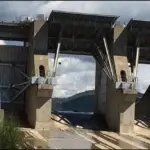Wet weather flow and dry weather flow refer to the flow of wastewater in a sewerage system.

What is wet weather flow?
Wet weather flow is the flow of wastewater that occurs during or immediately after precipitation events, such as rain or snowfall. This type of flow is characterized by large fluctuations in flow rate and is typically much higher than the dry weather flow.
What is dry weather flow?
Dry weather flow, on the other hand, is the flow of wastewater that occurs under normal, non-precipitation conditions. This type of flow is characterized by a more consistent and predictable flow rate.
Also Read: Download Handbook of Water and Wastewater Treatment Plant Operations by Frank R. Spellman PDF
How to determine peak dry weather flow?
Peak dry weather flow is the highest flow rate that occurs in the sewerage system during dry weather. It is used in the design of the sewerage system to ensure that it is able to accommodate the maximum flow that is expected to occur.
To calculate peak wet weather flow, one typically follows these steps:
- Measure the average rainfall intensity for a given duration.
- Measure the area of the drainage basin that contributes to the flow in the sewer.
- Multiply the average rainfall intensity by the area of the drainage basin to obtain the total precipitation volume.
- Add a factor to account for infiltration and inflow, which are additional water sources that enter the sewer system.
- Use a flow conversion factor to convert the precipitation volume to a flow rate.
The formula for peak wet weather flow is:
Pw = (I x A) + (I/I + I) x Q
Where:
Like Us on Facebook!
Pw = Peak wet weather flow (m3/s)
Subscribe Us on YouTube!
I = Average rainfall intensity (mm/hr)
A = Area of the drainage basin (m2)
I = infiltration (m3/s)
I = inflow (m3/s)
Q = flow conversion factor (m3/s/mm)
It’s worth noting that the above steps and formula are a simplified version of calculating peak wet weather flow and there are various methods used by different countries and organizations which may vary in their complexity and calculations.

















